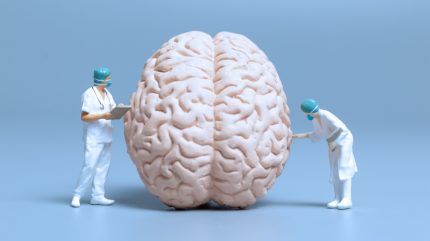
Fresh off positive data presented at the Clinical Trials on Alzheimer’s Disease 2024 (CTAD) conference earlier this month, Sinaptica’s CEO, Ken Mariash described neuromodulation in Alzheimer’s as the start of a “renaissance” for this technology.
While neuromodulation has seen success in treating Parkinson’s, depression, and other neurological disorders, Mariash highlights the vast potential for Alzheimer’s in an exclusive interview with Medical Device Network.
Sinaptica’s neuromodulation device, the SinaptiStim system, delivers targeted brain stimulation through a weekly, 20-minute session. The therapy specifically targets the “precuneus,” a crucial region of the brain’s default mode network (DMN) involved in memory and self-reflection. By stimulating this area, the therapy aims to enhance brain adaptability, reinforce memory pathways, and preserve cognitive connections.
Data presented at the CTAD 2024 conference from 29 October to 1 November in Madrid, Spain, highlighted that the system significantly slowed Alzheimer’s progression over a 12-month Phase II study (NCT05454540) in 32 patients. Using the Clinical Dementia Rating Scale-Sum of Boxes (CDR-SB) as a primary measure, patients in the neuromodulation group experienced an average CDR-SB change of 1.36 points compared to 2.45 in the placebo group – a 44% reduction in disease progression over one year.
Personalised neuromodulation
One of the key aspects of Sinaptica’s technology is the use of “perturbation-based biomarkers.” By actively stimulating the brain and measuring its response, researchers gain detailed insights into individual brain function. “Typically, brain activity is recorded at rest, but to truly understand a complex system, you need to perturb it and then analyse how it reacts,” explained Emiliano Santarnecchi, Sinaptica’s scientific co-founder and associate professor of neurology and radiology at Harvard Medical School.
This process enables Sinaptica’s team to “fingerprint” unique brain activity patterns, correlating them with symptoms and treatment response, paving the way for tailored neuromodulation strategies.
How well do you really know your competitors?
Access the most comprehensive Company Profiles on the market, powered by GlobalData. Save hours of research. Gain competitive edge.

Thank you!
Your download email will arrive shortly
Not ready to buy yet? Download a free sample
We are confident about the unique quality of our Company Profiles. However, we want you to make the most beneficial decision for your business, so we offer a free sample that you can download by submitting the below form
By GlobalDataThe approach also holds potential as a diagnostic and prognostic tool. “The idea of perturbation-based biomarkers initially started as a diagnostic biomarker concept,” Santarnecchi said. “We can compare individual fingerprints’ in patients and controls, identify who might respond to treatment, and predict disease trajectory. If I have a marker that tells me already that you’re going to develop something ten years before, we could go into the preventative space and anti-aging.”
Regulatory pathway and future of neuromodulation
US-headquartered Sinaptica has outlined a regulatory plan for SinaptiStim. The device won breakthrough device designation from the US Food and Drug Administration (FDA) in October 2022 and the company said it will move forward with plans to initiate a Phase III study next year.
Looking beyond Alzheimer’s, Mariash and his team see broad potential for neuromodulation across various applications, from memory enhancement and stroke rehabilitation to other neuropsychiatric conditions. “I see the neuromodulation industry going towards more personalisation, new indications, and more tailored precision medicine for patients,” said Mariash. He envisions a future where neuromodulation technology is not only therapeutic but also preventative.
“Alzheimer’s is just the beginning of a renaissance for this kind of technology,” Mariash added, hinting at the vast potential for early diagnosis and intervention in neurological conditions.
The number of people with Alzheimer’s in the eight major markets (US, France, Germany, Italy, Spain, UK, Japan, and China) is expected to grow from 21,921,200 in 2020 to 29,898,812 in 2030, as per GlobalData. A market model by GlobalData estimates the global neuromodulation device market will be worth $11.4bn by 2033, up from $6bn in 2022, underscoring the growing interest in neuromodulation as a validated treatment approach.



